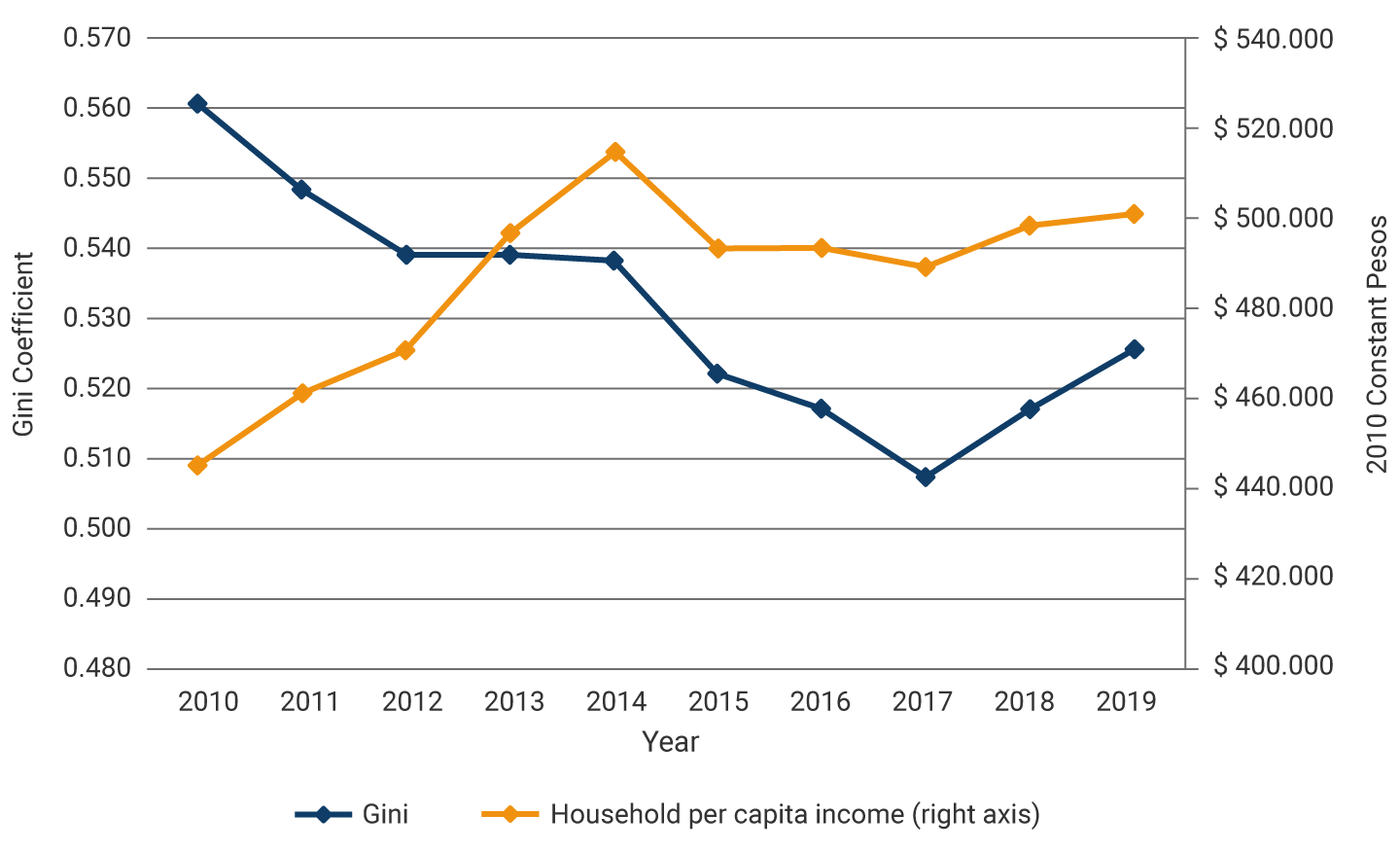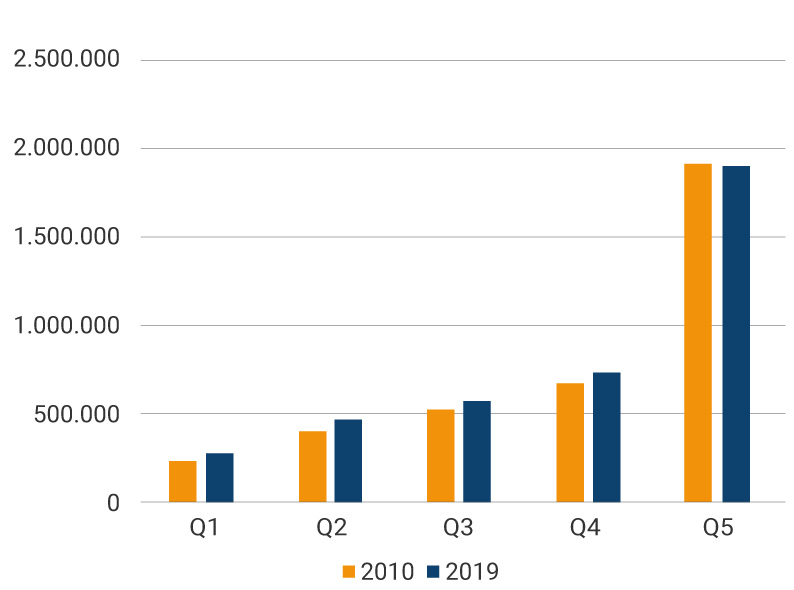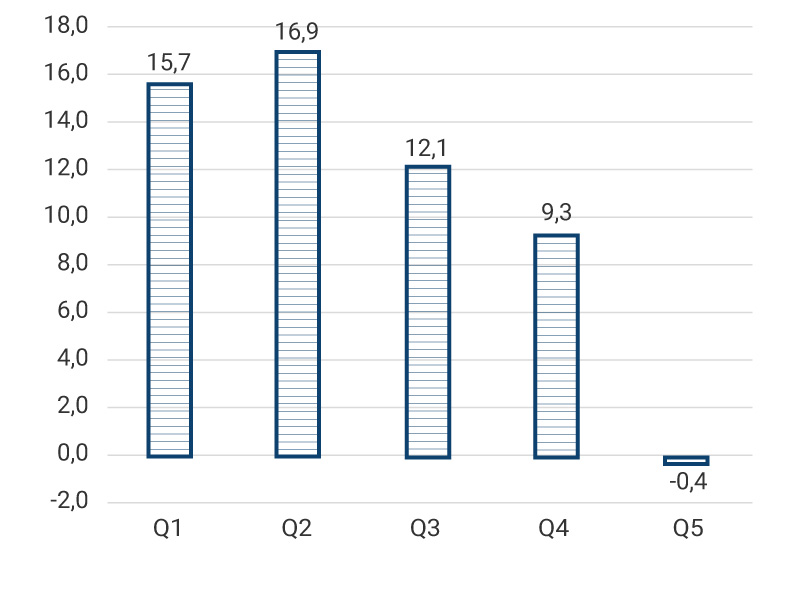After a period of growing income inequality at the end of the 20th century, Colombia began the 21st century with a decline in the Gini coefficient that was particularly pronounced in the decade following 2010. This indicator went from 0.56 to 0.51 between 2010 and 2017, increasing slightly at the close of that period and ending up at 0.53 for 2019. The decline in inequality was accompanied by increases in real per capita household income, which rose from COP 445,524 in 2010 to COP 500,577 in 2019 (Graph 1), measured in constant 2010 pesos.
Graph 1. Gini Coefficient: 2010-2019

Source: Integrated Household Survey (GEIH), DANE.
A study done by researchers at Banco de la República and published in the 101st edition of Ensayos sobre Política Económica (ESPE) documents how these improvements in income distribution were due largely to a relative increase in the real income of the poorest members of the population and particularly in their wages. Graph 2 shows the average wage of Colombians for 2010 and 2019, by income quintile, and the percentage change between these two years. As illustrated, real wages in the two lowest quintiles increased by 15.7% and 16.9%, respectively, while the variation in the highest quintile was -0.4%.
This reduction in wage gaps coincided, in turn, with a drop in wage differentials by educational level. According to data from the Integrated Household Survey (GEIH), while real wages earned by those with no schooling or only a primary education increased by 2.6% between 2010 and 2019, those for people with a technical or technological education, and wage earners with a university or postgraduate degree fell by 10.1% and 8.8%, respectively.
Graph 2. Average Wage by Income Quintiles: 2010 and 2019
a) Average wage by income quintiles (2010 constant pesos)

b) 2010-2019 Variation (Percentages)

Source: Own calculation based on the DANE GEIH.
Decades of public policies focused on strengthening access to education in Colombia led to an abundance of better educated workers and are behind this reduction in wage differentials. According to GEIH data, the proportion of workers with no schooling or only a primary education declined by -8.8 percentage points (pp) between 2010 and 2019, while the percentage who managed to finish high school or middle school, or obtained some type of degree in higher education, increased by 3.0 and 5.8 pp, respectively. Although Banco de la República’s research does not explore interaction between the education market and the labor market in detail, it is possible to conclude the growth in educational coverage helped to reduce the wage premiums for secondary and tertiary education and, therefore, contributed to the reduction in the wage gaps illustrated in Graph 2.
Generally, and as in the rest of Latin America, the decline in wage inequality in Colombia has played a central role in the changes in income distribution observed during the last decade. Although prolonged school closures due to the COVID-19 pandemic and limited access to Internet may have affected progress in terms of the quality and coverage of education in the short term, there are still profound factors with respect to more and better access to the educational system that have helped to improve income distribution in the country.

































































